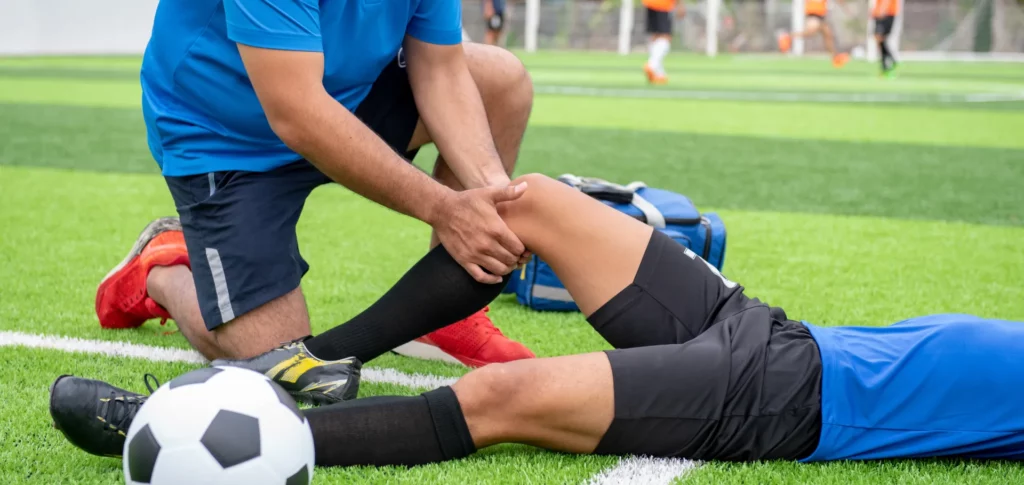Athletic activities bring excitement and challenge, but they also carry the risk of injury. While some injuries are a natural part of sports, others may result from negligence, unsafe conditions, or defective equipment. Knowing what to do immediately after sustaining an athletic injury can protect not only your health but also your legal rights. Here’s a step-by-step guide from a legal perspective to help you navigate the aftermath of an athletic injury.
1. Prioritize Your Health and Safety
The first and most important step after an athletic injury is to seek medical attention. Even if the injury seems minor, some conditions, like concussions or internal damage, may not be immediately apparent.
Steps to Take:
- Stop playing immediately to prevent further harm.
- Visit a doctor or emergency room for a thorough evaluation.
- Follow your doctor’s recommendations and keep all medical records.
Legal Tip: Medical documentation is critical evidence in personal injury cases, showing the extent of your injuries and the care required for recovery.
2. Report the Incident
Notify the appropriate authority about your injury as soon as possible. This could be your coach, school administrator, event organizer, or facility manager.
Key Information to Provide:
- Details of how the injury occurred
- The time and location of the incident
- Any hazards or negligence that contributed to the injury
Legal Tip: Filing a formal report creates an official record of the incident, which can be crucial if you pursue legal action.
3. Document the Scene and Gather Evidence
If possible, gather evidence at the scene of the injury to support your case. This step is especially important if the injury was caused by unsafe conditions or defective equipment.
What to Document:
- Photos or videos of the location, hazards, or faulty equipment
- Witness names and contact information
- Notes about what happened before, during, and after the injury
Legal Tip: The more evidence you collect, the stronger your case will be when proving negligence or liability.
4. Understand Your Rights
Athletic injuries often involve legal complexities, especially if you signed a waiver before participating. While waivers acknowledge inherent risks, they do not absolve parties of gross negligence or unsafe practices.
Key Points to Consider:
- Did the injury result from negligence, such as lack of supervision or unsafe conditions?
- Was the equipment defective or improperly maintained?
- Were proper safety protocols followed by organizers or staff?
Legal Tip: A personal injury lawyer can review any waivers you signed and help determine whether your case is valid despite those agreements.
5. Avoid Speaking with Insurance Adjusters
If insurance representatives contact you, be cautious about providing statements or accepting initial offers. Insurance companies may try to minimize their payout, even if you are entitled to more compensation.
What to Do:
- Politely decline to discuss details until you consult a lawyer.
- Do not admit fault or speculate about the cause of the injury.
Legal Tip: Your lawyer can handle communications with insurance companies to ensure your rights are protected and you receive fair compensation.
6. Consult a Personal Injury Lawyer
Seeking legal advice early in the process can make a significant difference in the outcome of your case. A lawyer experienced in athletic injury claims can help you navigate the complexities of liability and compensation.
How a Lawyer Can Help:
- Investigate the circumstances surrounding your injury
- Identify liable parties, such as coaches, schools, or equipment manufacturers
- Negotiate with insurance companies for a fair settlement
- Represent you in court if necessary
Legal Tip: Most personal injury lawyers offer free consultations, so there’s no risk in seeking advice.
7. Explore Your Legal Options
Once your lawyer has reviewed your case, they can guide you on the best course of action. Depending on the circumstances, you may be able to pursue compensation through:
- A Personal Injury Claim: Against negligent parties, such as coaches, event organizers, or facility managers.
- Product Liability Lawsuit: If defective equipment caused the injury.
- Workers’ Compensation: If the injury occurred during employment-related activities.
Legal Tip: Compensation may cover medical expenses, lost wages, pain and suffering, and other damages related to your injury.
8. Monitor Your Recovery
Continue following your doctor’s recommendations and document your recovery process. This includes keeping a journal of your physical and emotional progress and noting any long-term impacts of the injury.
Why It’s Important:
- Demonstrates the ongoing effects of the injury
- Supports your claim for compensation for pain and suffering
- Ensures you receive appropriate medical care for full recovery
Legal Tip: Keep all receipts and records of medical expenses as part of your evidence.
Conclusion
Sustaining an athletic injury can be a life-changing event, but knowing what steps to take can help protect your rights and secure the compensation you deserve. From prioritizing your health to consulting a personal injury lawyer, each step plays a crucial role in building a strong case.

